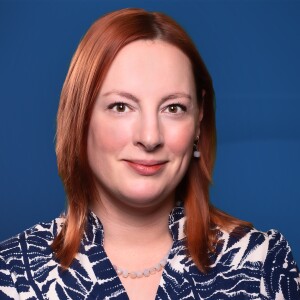CLEVELAND — George Dixon remembers when the apartment tower down the block was full.
But it’s been vacant for years – an eyesore on Hough Avenue near East 93rd Street, just a few steps away from the Dixon family’s corner store.
“It kind of left a hole in the community,” he said Wednesday.
Now, someone is filling that void. A real estate developer just closed on financing for a $47 million makeover, and construction is scheduled to start this month.
The building will become workforce housing for households that make $35,880 to $46,680 a year. A community center will rise next door, offering residents help to find better jobs, education and health care.
“Hopefully it brings people hope,” said Gina Merritt, the lead developer on the deal and the principal of Northern Real Estate Urban Ventures, based in Washington, D.C.
“Hopefully they think, well, if somebody took that on after sitting there for 15 years, maybe there’s hope for our neighborhood,” she added. “Maybe things will change. Maybe we’ll get access to things that we didn’t have access to.”

Merritt and her co-developer, a Texas company called SLSCO Ltd., have been trying to do this project for three years. SLSCO bought the building at 9410 Hough Ave. in June of 2021 and brought Merritt on board to weave a complicated web of financing.
Then, interest rates spiked. Construction costs soared.
The project stalled in 2022.
“There was a point where I wasn’t sure it was going to happen. Or I had doubts. And that was scary,” said Merritt, a rare Black female developer who has spent most of her career managing other people's projects.
For so long, she was holding her breath. Now, she can finally let it go.
“It took a village full of lenders and investors to make it happen,” she said of funding the project, which she’s calling Ninety-Four Ten Hough.
“Local governments, foundations, it's the only way this stuff is gonna get done while we're in this economic space,” she said.
The city kept an $8 million commitment it made to the project in 2021, using federal stimulus money from a pandemic-recovery program. Merritt also took advantage of state programs, including tax credits for investors in economically distressed neighborhoods.
“I need to go figure out how to get in touch with Governor DeWine,” she said. “Because I'm telling you, these people were amazing.”
To close the gap, the Cleveland Foundation put in $1.5 million. The George Gund Foundation contributed $500,000. Enterprise Community Partners, Cleveland Development Advisors and other organizations also chipped in.
“These folks went in their checkbooks and pulled out a pen and wrote more checks. … It was the people who are invested in Cleveland who said ‘we want to get this done,’” she said. “And that was huge to me.”

The apartment tower, once called Community Circle I, has been vacant since 2008. Other developers looked at it, but they couldn’t figure it out.
The building can’t be anything but affordable housing due to restrictions placed on the property years ago by the U.S. Department of Housing and Urban Development.
Now, it will become 116 one- and two-bedroom apartments, which are scheduled to open in late 2025 or early 2026.
“That’s what families need. That’s what families are looking for. They deserve to have a quality place,” said Councilwoman Stephanie Howse-Jones, who represents the area.
She described the city’s investment in the project as part of a broader, decade-long push to add thousands of new and renovated homes – and clean up neighborhoods – across Cleveland.
“Where there is blight,” she added, “it’s a sign that you are forgotten. Now there will be a visual realization that, as our community is moving forward, people are not forgotten.”
On Wednesday, neighbors passed by on their walks to and from Dixon’s Market.
One man said he lived in the apartment tower in the 1980s. “It was beautiful,” said the neighbor, who would only give his name as Mr. Williams.
But after decades of disinvestment on the East Side, he’s doubtful about change.
There has been a flurry of apartment construction in Hough over the last few years. But those buildings are for people coming from outside, he said, not for longtime residents.
“I’ll believe it when I see it,” he said of bringing affordable housing and supportive services, including financial literacy, career help, children's activities and art and music programs, to the block. “Because that’s not happening. Not in this hood.”

Merritt is committed to proving the skeptics wrong. She’s planning other investments in Hough, where she bought the vacant Martin Luther King Jr. Plaza shopping center last year.
She plans to demolish the building on Wade Park Avenue and replace it with a mixed-income, mixed-use development. Construction on the first phase of that project, 53 low-income apartments, could start next year. Later phases will include more apartments, townhouses and a market hall focused on Black-owned businesses.
“It’s unbelievable,” she said of the support she’s found here. “Cleveland pulled it out – and now I do wanna be there forever. Because these folks believe in me, and I really want to make an impact on that community.”

At Dixon’s Market, George Dixon is looking forward to new neighbors and shoppers.
He runs the small store with his brother and mother. It’s a place where people meet and share news – many of them strolling past the rundown apartment building on their way.
“You might have some people say it’s, you know, 93rd and Hough. Why would we want to live there?” Dixon said. “But it’s just a couple streets over from Cleveland Clinic. There are a lot of hardworking people who are just trying to have a good living for their kids and be able to see them go off to school and college.
“And being able to have affordable housing, people kind of take that for granted,” he said. “But it’s huge. It’s major.”





